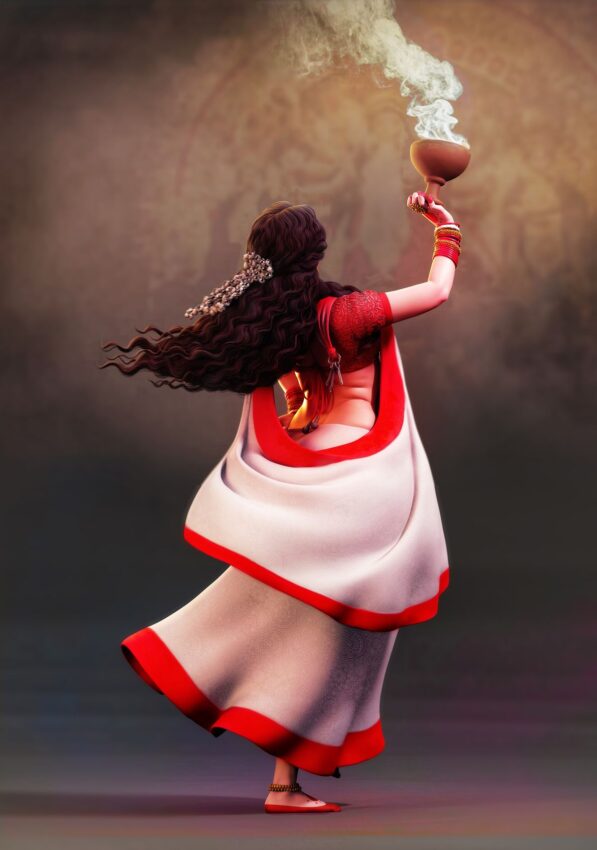Discover the vibrant history of Bengali culture and traditions. From literature to festivals, Bengali heritage continues to inspire and shape the world.

The Rich and Diverse History of Bengali Culture and Traditions
Bengali culture is more than just a tradition; it’s a living, breathing expression of history, art, and identity.
For centuries, the people of Bengal have nurtured a rich tapestry of values, arts, and customs. These elements reflect the region’s deep-rooted connection to its past.
This culture is a blend of old and new. Modern influences meet ancient practices, making it truly unique.
Bengal, located in the eastern part of the Indian subcontinent, has long been a land of creativity, spirituality, and intellectualism.
The bustling streets of Kolkata (Calcutta) offer a distinct way of life. The peaceful villages of Bangladesh are equally colorful.
Let’s take a deep dive into the history of Bengali culture and its time-honored traditions.
The Ancient Roots of Bengali Culture
The roots of Bengali culture go deep into ancient times.
The Indus Valley Civilization, one of the world’s oldest cultures, laid the foundation for the region’s history.
Bengal became a significant part of the Maurya and Gupta empires. This inclusion helped foster early developments in arts, education, and literature.
During this period, the region became a hub of learning, and intellectual pursuits thrived.
The Vedic traditions of spirituality and rituals were practiced. At the same time, the Buddhist influences became prominent in Bengal by the 3rd century BCE.
Monastic universities like Nalanda attracted scholars from all over the world.
In these early days, Bengal was already recognized for its intellectual and cultural brilliance.
The Influence of Legends: Bengali Myths and Folklore
Bengali culture is rich with myths, legends, and folklore passed down through generations.
These stories carry deep cultural meanings, spiritual insights, and moral lessons.
One of the most iconic legends is that of Maharaja Shashanka, the first ruler of Bengal. His legacy represents the fierce independence of the Bengali people.
Another famous tale is the story of Kali the Dark Mother, a powerful goddess of destruction and creation.
The grand celebration of Durga Puja reflects these mythological roots and brings communities together in joy and unity.
To explore more about timeless legends, read about Gyanganj – The Hidden Kingdom Where Time Stands Still. It is a fascinating tale that continues to mystify spiritual seekers.
Islamic Influence and the Bengal Sultanate
By the 13th century, Bengal witnessed a cultural transformation with the arrival of Islam.
The Bengal Sultanate beautifully blended Islamic, Persian, and local traditions, especially visible in its architecture and art.
This era gave rise to stunning mosques and madrasas. Literary and philosophical thought also flourished.
Poets like Mirza Ghalib and rulers like Sher Shah Suri left a lasting impression on Bengal’s evolving identity.
The Bengal Renaissance: A Time of Change
The Bengal Renaissance during the 19th century sparked social, cultural, and political awakenings.
Icons like Rabindranath Tagore, Kazi Nazrul Islam, Swami Vivekananda, and Ishwar Chandra Vidyasagar led the way in shaping modern Bengali identity.
Tagore’s works such as Rabindra Sangeet continue to be cherished across generations.
Kazi Nazrul’s powerful poetry inspired resistance and unity. Their contributions made Bengal a beacon of intellectual thought.
Their messages still resonate today—much like the inspirational legacy of A.P.J. Abdul Kalam, who combined knowledge with humility to touch millions of lives.
Bengali Language and Literature: A Living Tradition
The Bengali language is deeply connected to the soul of its people.
Bengali literature explores everything from human emotions to social issues.
Great literary figures like Bankim Chandra Chattopadhyay, Sarat Chandra Chattopadhyay, and Jibanananda Dasenriched Bengali storytelling.
Their works are studied and celebrated to this day.
Festivals: Celebrating Life with Joy and Color
Festivals are central to Bengali life.
Durga Puja is the grandest celebration, while Poila Boishakh welcomes the Bengali New Year with sweets, music, and love.
Other festivals like Eid, Christmas, and Saraswati Puja show the cultural harmony of Bengal.
Each festival brings people together and showcases the rich traditions of the region.
Bengali Cuisine: A Feast of Flavors
Food in Bengal is an experience!
From machher jhol to shorshe ilish, Bengali dishes are bursting with flavors.
Sweets like rosogolla, sandesh, and mishti doi are world-famous.
If you’re looking to nourish both body and soul, check out The Best Superfoods and Their Amazing Benefits to discover healthy, delicious ways to complement traditional Bengali meals.
The Art and Music of Bengal
Music and arts are deeply rooted in Bengali culture.
Whether it’s Baul songs, Rabindra Sangeet, or classical dance, Bengal thrives on artistic expression.
Bengali cinema has also made its mark globally.
Filmmaker Satyajit Ray gained international fame for his humanistic storytelling.
For more inspiring global perspectives, visit www.america112.com for unique stories and cultural insights beyond borders.
Conclusion: A Culture That Lives On
Bengali culture is vibrant, resilient, and ever-evolving.
It blends tradition with innovation. It honors the past while embracing the future.
With a rich history, colorful festivals, soul-stirring music, and a love for literature, Bengali culture continues to inspire and thrive.
Let us celebrate this beautiful heritage and pass it on to future generations with pride.

